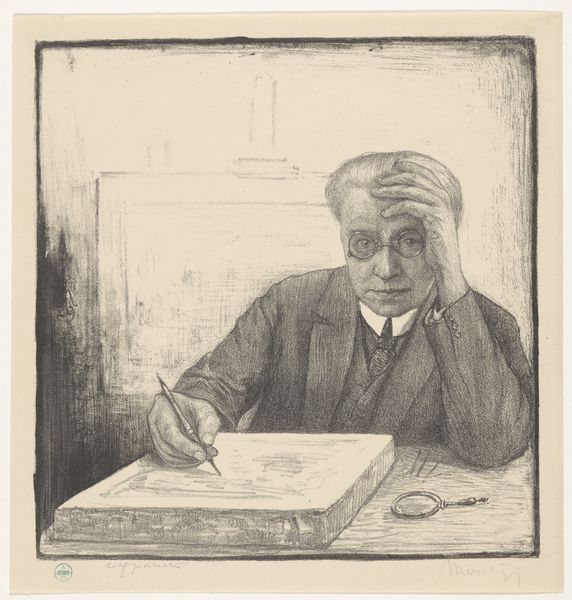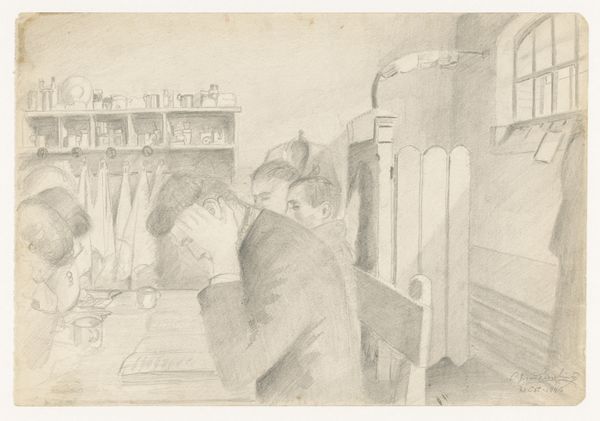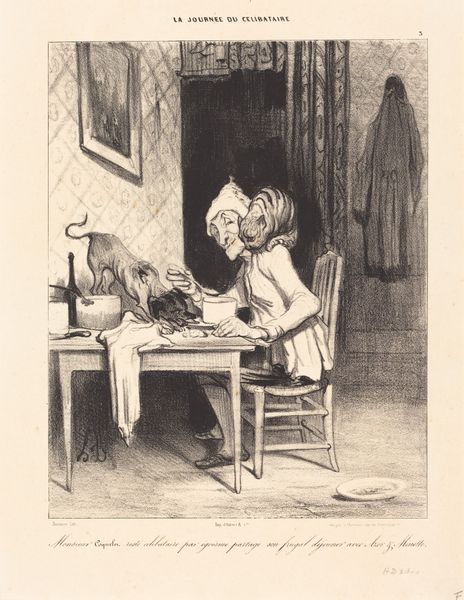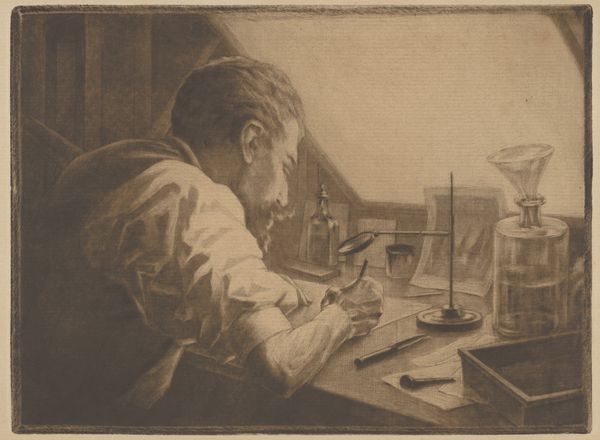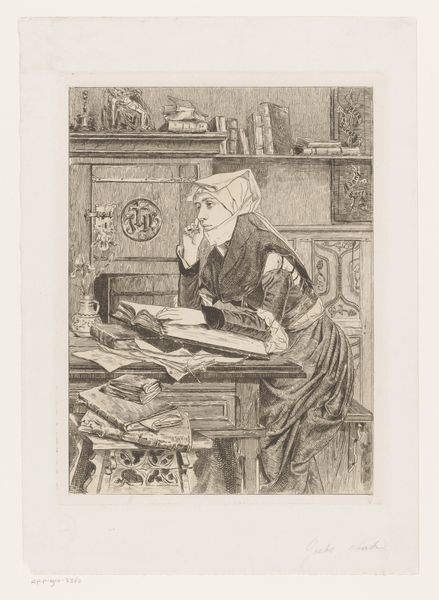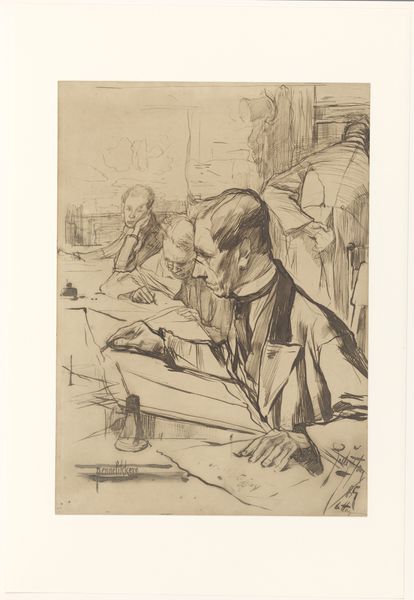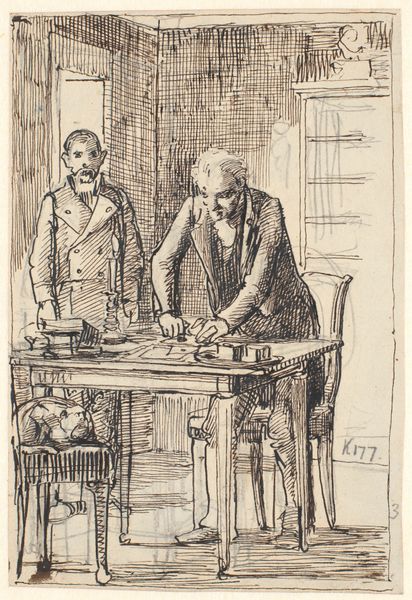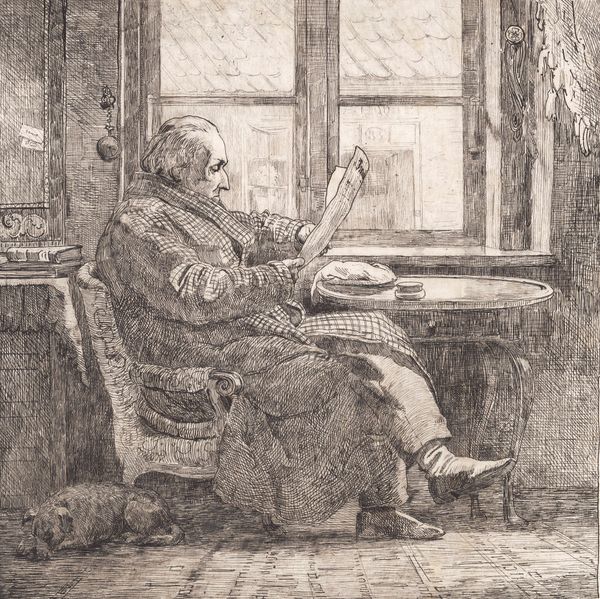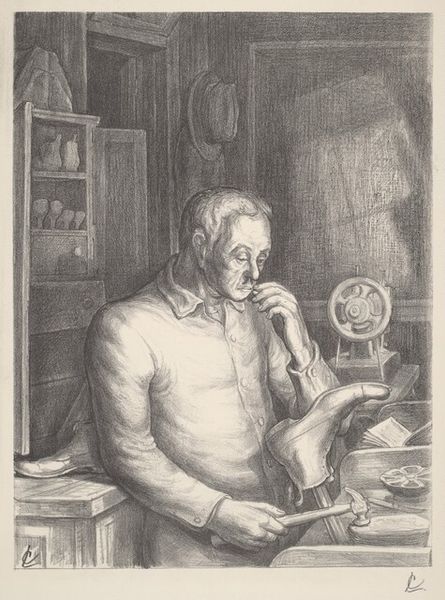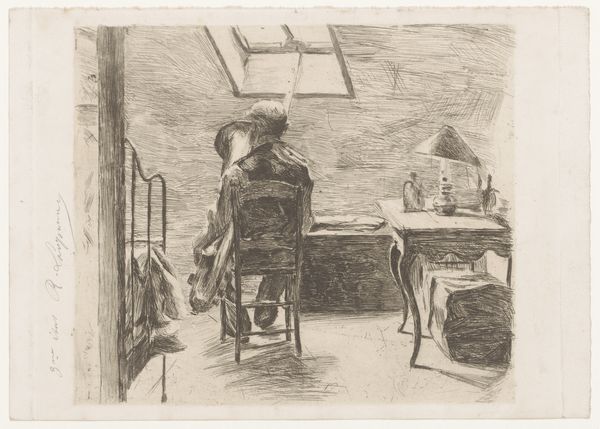
drawing, graphite
#
portrait
#
drawing
#
pencil sketch
#
caricature
#
pencil drawing
#
graphite
#
portrait drawing
#
genre-painting
#
modernism
#
realism
Dimensions: height 289 mm, width 278 mm
Copyright: Rijks Museum: Open Domain
Editor: Here we have Herman Heijenbrock's "Kantoorbediende," created sometime between 1875 and 1925, using graphite and pencil. It seems like a fairly straightforward drawing of office workers, but there’s an underlying sense of exhaustion or frustration that I find interesting. What do you see in this piece? Curator: It’s interesting you pick up on that sense of exhaustion. I think it speaks volumes about the artist's critique of industrial labor during that period. Look at the rigid lines, the almost caricatured features of the workers – it hints at the dehumanizing aspect of office work. How does that critique sit within a larger historical context? Editor: You mean the rise of the office as a workplace? I hadn't really considered that aspect. So, you are suggesting that the drawing can be read as a commentary on the alienating effects of the burgeoning bureaucratic systems? Curator: Precisely. Heijenbrock places these figures in a specific social stratum and explores their relationship with a changing economy. We can delve into questions of class, power structures and the impact of industrialisation. Is Heijenbrock maybe showing us how workers' individuality is being sacrificed in this new environment? Editor: I see what you mean! The repetitiveness of their tasks must be quite soul-crushing. Are you suggesting that Heijenbrock is pointing to an early form of worker exploitation? Curator: I think the drawing can certainly open up that dialogue, making the viewer question not just the circumstances, but also reflect on contemporary parallel concerns of modern labor. Ultimately, the political significance of this artwork relies on the understanding of how our identities are often interwoven with labor. Editor: I hadn't considered the social commentary inherent in the work; thanks for providing a perspective into how even a seemingly simple sketch opens up such profound narratives about society, identity, and class. Curator: Absolutely! Art always invites us to rethink what we know and encourages social dialogue!
Comments
No comments
Be the first to comment and join the conversation on the ultimate creative platform.
